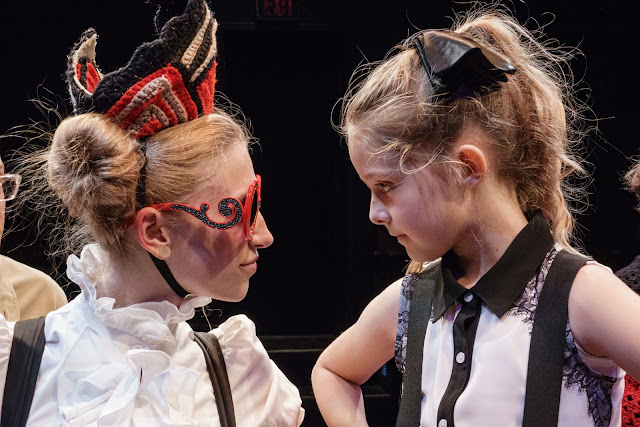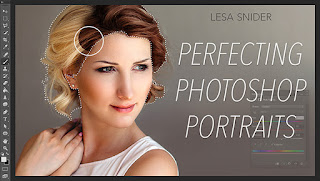The Red Queen.
Ah. The Theater... Where modernism meets literature from days gone by. Zach Theatre is producing a children's play based (loosely) around Alice in Wonderland. The play starts on their smallest stage, in the intimate Whisenhunt Theater. Around the time "Alice" falls into Wonderland the audience is divided up into groups and each group follows a character, identified by a playing card suite, on a journey through the middle of the story, across multiple exterior locations on the Zach campus.
It's an interesting concept and I'm almost tempted to come back for one of the school day shows to see how they corral 150 kids and teachers, moving them from location to location. But that isn't my worry. Today, my task was to tag along with one group and get images to use for marketing and public relations.
We started our rehearsal around 11:45am and spent the first twenty minutes or so in the theater before being disgorged into the bright sunlight of an unusually warm, March day. It was near 80 degrees by noon and in the direct sun it felt unnaturally warm. The wide range of lighting was also a good test for the camera of the day.
The Red Queen and Alice.
"Battle of the Blond, Stray Hairs."
(click to see bigger).
My source at the theater mentioned that there might be an audience for today's dress rehearsal. I imagined a theater full of elementary school children --- pre-lunch. I wanted to use a camera on which I would not have to change lenses or worry about maneuvering around in tight spaces. I also wanted a camera that would handle a dark theater and bright, Texas sun. Toss in a camera with a wide ranging zoom lens and an EVF and, in my world, you are speccing out a Sony RX10ii. And a Sony RX10 (v.1) as a back-up. You know the specifications. But here's quick recap: 20 megapixel, one inch sensor. Good noise handling at higher ISOs (up to 3200 in dark spaces). A killer lens that goes from 24-200mm at f2.8. Nail it the first time auto white balance. WYSIWYG EVF. Small, quiet, competent. (more>)
We started in the darkness of the small theater. It's still equipped with lower powered, tungsten lights and the levels are such that we get ISO 1600, 1/160th of second shutter speed and f2.8. In my book that counts as low light. Another peccadillo of the small theater is that all of the lighting is mounting on an overhead grid and it comes in at too high of an angle. I'm always watching for the actors to pick up their chins to get the light on their faces just right....
Outside it was every bit of full on, noon, Texas sunlight. But since this was a dress rehearsal with constant movement from place to place we didn't have the luxury of diffusing, reflecting or using flash to tame the very broad range of the direct sunlight. I depended on the Sony, high dynamic range sensor technology and their DRO feature to get open shadows without unduly blowing highlights. It worked well, even in scenes that were predominantly backlit.
I had the RX10ii in hand and a small, Domke bag over my left shoulder. The bag held the second camera, three extra batteries, a cellphone and my sunglasses. My black sweat shirt felt good in the theater when we got started but I couldn't wait to take it off after twenty minutes in the sun. Good thing I remembered to wear a black t-shirt underneath and a good thing I have deodorant in my swim bag.
For any outside shot that was situated in open shade I tried to position myself with the sunlight backgrounds behind me and the open shade as the only thing the camera could see. Inside, I shot with the lens wide open but outside I worked at ISO 100, f5.6 and whatever the matching shutter speed was.
In the past, because of the tight deadlines for turning around images, I shot in Jpeg but my current computer is fast and agile so I've started shooting the Zach material in Raw. I still shoot a crazy number of files. Especially for a show like this where I have no idea of what it's all going to look like or where we're going to end up at any time.
With the Nikon cameras I can choose a compressed Raw and I can choose between a 12 bit and a 14 bit file. With the Sony there is no fine parsing of the file details --- you either shoot Raw or you shoot Jpegs and that's the choice you get. I shot 32 gigabytes of raw but I was able to edit down to about 1,000 deliverable files. When you shoot raw you'll consider yourself smarter if you shoot everything with manual settings. That way there's no variation in the coverage of a scene (unless you intentionally change settings) and what this means is that everything stays the same in terms of exposure, color balance, tonality, etc. from the first frame to the last of each scene. You can choose one image, fine tune the hell out of it, and then apply the setting parameters across all the files in that set. It's a very fast way to work. (more>)
As is typical of a Zach Theatre show, all the talent was really professional, and well rehearsed. They could have handled an audience today with aplomb. The same can be said for my Sony RX10ii. It's a chameleon of a camera. It can be almost "hands off" automatic or view camera-like intricate, depending on your personality and your needs. I only wish I could go back and do it all over again in video --- just to see what that would have looked like. (more>)
Light bouncing in under a covered areas from a sidewalk.
We set up a little group shot at the end.
Of course, I fear any change in routine so it was anxiety producing to go from the "known" theater space to eight different exterior locations, all with different lighting characteristics. But I managed to get it done and to my satisfaction. There are times a bigger camera might have yielded different results; a more blurred background, for instance. But in terms of getting the job done I couldn't have asked for a more fluid and competent tool than my little Sony. What a fun thing to do before lunch time.
All of my post processing today was done in Lightroom.
**
Take a class: Become more skilled and knowledgable. Have more fun.

One of the original Craftsy Photo Classes and
still one of the best!
I met Lance a couple of weeks ago in Denver
and found him to be really fun and knowledgeable
this class reflects what he teaches in hands-on
workshops in Ireland and Iceland, as well as
cool places around the U.S.
How to make what we shoot into a cohesive
train of visual thought.



























